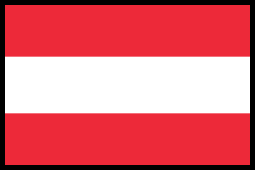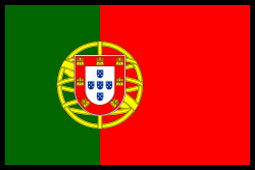Send Gifts In Europe / Spain / Gift Baskets to Badajoz

Send Gift Baskets to Badajoz, Spain
Are you looking for the best and perfect gift baskets to Badajoz, Spain for your loved one? If yes, you reached the right place.
In the autonomous community of Extremadura, Spain, Badajoz is the capital of the Province of Badajoz.
The population of Badajoz: 151,565 (2011)
The standard delivery method to Badajoz: 4 – 6 working days*
The express delivery method to Badajoz: 1 – 2 working days*
*Saturday and Sunday are not included as working days
Use Our Advice
We are here always at your service.
No Minimum Order
Each customer is important to us.
Shipping Information
We deliver all over Europe.
Discover Our Gift Baskets For Every Occasion
Holiday Gifts
Badajoz Overview
In the autonomous community of Extremadura, Spain, Badajoz is the capital of the Province of Badajoz. It is located on the left bank of the Guadiana River and is close to the Portuguese border. In 2011, the population of the city was 151,565.
In the past, it was known as Civitas Pacensis, a settlement established by the Romans and Visigoths. In the 8th century, Badajoz was conquered by the Moors and became a Moorish kingdom, the Taifa of Badajoz. Spain and Portugal alternated control of the area following the Reconquista for several centuries, resulting in several wars, including the Spanish War of Succession (1705), the Peninsular War (1808–1811), the Storming of Badajoz (1812), and the Spanish Civil War (1936). A large portion of the town’s history is influenced by Spanish culture.
History
The Bronze Age has been dated by archaeological finds discovered in Badajoz. There are megalithic tombs dating back to 4000 BC, while most of the steles discovered date back to the Late Bronze Age. There are also weapons such as axes and swords, everyday items such as pottery and utensils, and jewelry such as bracelets. Lower Paleolithic remains have been discovered during archaeological excavations. There were also artifacts found in the Roman town of Colonia Civitas Pacensis in the Badajoz area, although more were found in Mérida.
As a result of the Roman invasion in 218 BC during the Second Punic War, Badajoz and Extremadura became part of Hispania Ulterior (Farther Spain), which was divided by Emperor Augustus into Hispania Ulterior Baetica and Hispania Ulterior Lusitania; Badajoz became part of Lusitania. Even though the settlement is not mentioned in Roman history, Roman villas such as the La Cocosa Villa have been discovered in the area, along with Visigothic constructions.
During the reign of the Almoravids and Almohads of North Africa as well as the Umayyad caliphs of Córdoba, Badajoz gained prominence. A Persian dynasty, the Umayyads, controlled the region from the 8th century until the beginning of the 11th century. It was around 875 that the Muladi nobleman Ibn Marwan laid Badajoz’s official foundation after being expelled from Mérida. A critical autonomous rebel state was established in the city under Ibn Marwan, which lasted until the 10th century. The Taifa of Badajoz, a small kingdom with approximately 25,000 inhabitants, was founded here in 1021 (or maybe 103). The city was once known as Ba*alyaws during Muslim rule. Christian rulers overthrew the Moorish regime in Badajoz in 1086 following the invasion of Alfonso VI of León. In addition to the Almoravids of Morocco, who invaded Badajoz in 1067, the Almohads invaded it in 1147.
Modern history
Although the town continued to grow after the war, significant migrations to other Spanish regions and European countries have occurred since 1960.
In the following decades, Badajoz became increasingly dependent on the tertiary sector, making it one of the most important commercial centers in southwestern Spain and a significant trade and cultural link between Spain and Portugal. It was not long after a heavy flood devastated several neighborhoods of the city on 6 November 1997. Twenty-one people lost their lives, and hundreds of homes were destroyed. Extratropical Atlantic troughs crossed the Iberian Peninsula and inundated normally dry brooks like Rivilla and Calamon, causing the catastrophe. The flood caused the most damage to the neighborhood of Cerro de Reyes, near both streams’ confluences.
Geography
Badajoz is situated on the bank of the Guadiana River, on the border with Portugal in the southwest of the Iberian Peninsula. As the capital of the same-named province, it is the largest city. The town is located 61 kilometers (38 mi) from Mérida, 89 kilometers (55 mi) from Cáceres, 217 kilometers (135 mi) from Seville, 227 kilometers (141 mi) east of Lisbon, and 406 kilometers (252 mi) from Madrid. A newer section of the city is located on the left bank of the river, with several industrial estates and the university hospital.
Located in the South Submeseta, Badajoz is geologically a part of the South Submeseta. On a Paleozoic limestone hill carved by the river, it was founded on the banks of the Guadiana River. The Alcazaba is one of the city’s main sights on this hill. As a result of ancient Paleozoic deposits, the soils of Badajoz derive from tertiary deposits. Averaging 184 meters (604 feet) above sea level, it has an average altitude of 184 meters. Cerro del Viento (219 meters (719 ft), Fuerte San Cristóbal (218 meters (715 ft), and Cerro de la Muela (205 meters (673 ft) are the highest points. The lowest points are one hundred sixty-eight meters (551 feet) from the river Guadiana.
Climate
The hot-summer Mediterranean climate (Köppen: Csa) of Badajoz is similar to the temperatures of the coast and the central valley of California, with mild winters that are often below zero and hot summers that can sometimes exceed 40°C in a year. While precipitation is at a semiarid threshold, the temperature is warm. The chart below shows Badajoz’s climate changes drastically between summer and winter. This measuring station is located at 203 meters (666 feet). 17.1 degrees Celsius (62.8 degrees Fahrenheit) is the average annual temperature. July has an average high temperature of 34.8 °C (94.6 °F), while January has an average low temperature of 3.3 °C (37.9 °F). The average annual rainfall is 447 millimeters (17.6 inches), with December recording a maximum of 69 millimeters (2.7 inches) and July the driest with just 0.5 millimeters (0.020 inches). The humidity level averages 64% on an annual basis. There are 2,860 hours of sunshine on average in the city each year.
Demographics
150,376 people were living in Badajoz in 2010. The 2010 census found 73,074 men and 77,312 women residing in Badajoz, representing 48.6% and 51.4% of the population. Compared to the Extremadura region (49.7% and 50.3%), Badajoz City has a higher proportion of women.
Despite its high population density (102.30 inhabitants/km2), it has one of the lowest population densities in Extremadura due to its extensive municipality, one of the largest in Spain. Aside from the metropolitan center, districts, neighborhoods, and towns with smaller populations exist. The most populous of these is Guadiana, which had 2,524 people in 2012 but gained independence on 17 February 2012.
Economy
In the past, Badajoz’s economy was devastated by frequent wars, and the people were poor. Its agricultural land wasn’t fertile, and its territory had no primary industry. However, the historical monuments in the town and in Mérida have been major tourist attractions, resulting in tourism growth and industrial development in recent years.
Badajoz is primarily a commercial city, ranked 25th in economic importance in Spain according to the 2007 Economic Yearbook published by La Caixa Research Service. Located in the heart of Portugal’s trade corridor, the city has a significant transit trade with the country. The service sector dominates the city’s economy, and Menacho is the main shopping street where most national and international chains are located. Thousands of Portuguese visit the Centro Comercial Abierto Menacho every year, the largest outdoor shopping center in Extremadura, and it has been invested several hundred thousand euros. This region has several notable industries, such as the manufacture of linen, woolen, and leather goods, hats, pottery, and soap. As a result of the province’s and Portugal’s customers, trade thrives. Due to the importance of such trade relations with the neighboring country, the new trade fair venue, Institución Ferial de Badajoz (IFEBA), was built in 2006 in the suburbs. In addition to its economy and culture, the city also has a wide range of markets, including fish markets, food stalls, health shops, and the Old Town area, which is slowly recovering after being damaged by the trade fair.
Almost all of the industrial land on the west side of the river is occupied by a large industrial estate, El Nevero, adjacent to the A-5 (one of six radial roads in Spain with numbers A-1-A-6), which is constantly expanding and is home to a variety of companies. There are industrial estates in the suburbs and small businesses in neighborhoods like San Roque. It was announced in the summer of 2007 that a 38 million euro headquarters would be built for the Caja de Badajoz, and construction began in October 2008 and is currently underway. A financial center with 17 floors, the Torre Caja Badajoz is Extremadura’s tallest building at 88 meters (289 ft). A conference center and an airport are also located in the city, 14 kilometers (8.7 miles) from the town center.
Religion
In the Roman Catholic Archdiocese of Mérida-Badajoz, Badajoz is the see. Before the merger of the Diocese of Mérida and the Diocese of Badajoz, Badajoz was the see of the Diocese of Badajoz since 1255. As a result, Christianity became the dominant religion in Badajoz, and the Diocese of Badajoz is based at the Badajoz Cathedral (Cathedral of St. John the Baptist), a gothic-style building built in 1284 in the Plaza de Spain, the city’s main square. The building was extensively refurbished between the 16th and 18th centuries. A museum in the cathedral displays the paintings of Luis de Morales, an artist of the Renaissance period. Gaspar Méndez built the cathedral’s 41-meter (135-foot) tall tower in 1542 in the Gothic style. The windows are made of stone and carved using ashlar masonry. Clocks were fixed on two faces as part of the renovations carried out in 1715. With its belfry and battlements, the tower is fortified. As a dean of the cathedral of Badajoz, Richard Alfred Davenport wrote in 1827; he described him as “more intelligent than all the doctors of Salamanca, Coimbra, and Alcala combined; he understood all languages, living and dead, and was a perfect master of every divine science.”
Sports and recreation
- Football – A new association football club, CD Badajoz 1905, was formed in 2012 by former CD Badajoz supporters. After being promoted to the fifth level of Spanish league football in the 2012–13 season in the playoffs, the club currently plays in the Regional Preferente in Extremadura.
- Basketball – AB Pacense is Badajoz’s basketball club, formed in 2005 from the remnants of the city’s dissolved basketball clubs, including Caja Badajoz, Circulo Badajoz, and Habitacle. In addition to its home arena at Polideportivo La Granadilla, the club competed in the Liga EBA. In the summer of 2013, the club dissolved.
- Golf – The city of Badajoz is home to two golf courses. A 9-hole golf course built in 1994 is the Don Tello Golf Course (Spanish: Club de Golf de Mérida Don Tello). A gentle, undulating golf course set along the banks of the Guadiana River is described as “gentle and undulating.” Guadiana Golf Course (Spanish: Golf del Guadiana) was built in 1992 and consists of 18 holes. Due to its abundance of trees and 14 lacustrine features, the course is regarded as challenging.
Transport
There is only one railway station in Badajoz, the Badajoz railway station (Spanish: Estación de Tren de Badajoz, IATA: BQZ), located north of the city. A long-distance and a medium-distance train run by the public company Renfe are accommodated at the station. It was the last Spanish station on the Spanish railway system before the Portuguese took it over. This station will be replaced by a new facility located at the border with Portugal that will provide high-speed service through the Southwest-Portuguese corridor and the Madrid-Lisbon line.
Aeropuerto de Badajoz (IATA: BJZ, ICAO: LEBZ), or Badajoz Airport, is located 13 km (8 mi) from the city center. The civilian airport shares a runway and control tower with Talavera la Real Air Base (Spanish: Base Aérea de Talavera la Real), operated by the Spanish Air Force.
Healthcare
Badajoz’s first hospital, the Hospital de San Sebastian, was founded in 1694.
The health district of Badajoz includes the municipalities Alburquerque, Alconchel, Barcarrota, Gévora, Jerez de los Caballeros, La Roca de la Sierra, Montijo, Oliva de la Frontera, Olivenza, Pueblonuevo del Guadiana, San Vicente de Alcántara, Santa Marta, Talavera la Real, and Villanueva del Fresno, which are divided into 17 zones, and seven in Badajoz. Hospital Universitario de Badajoz, Hospital Perpetuo Socorro, Hospital Materno Infantil, and clinics include Clinica “Clideba” de Capio, Clinica “Caser” de Capio, and Clinica Extremeña de Salud. Beyond Puente Real, next to the University of Extremadura, lies the Hospital Universitario de Badajoz.
What is Badajoz Spain known for?
It was here that the New World conquistador Pedro de Alvarado and the painter Luis de Morales (“The Divine”) were born. A bastioned wall with a moat and outworks, as well as forts on the surrounding heights, give the city the appearance of strength.
Is Badajoz, Spain, worth visiting?
Even though Badajoz may not be the most scenic city in Extremadura, it’s worth the detour if you’re traveling through southwest Spain. While strolling through its old town, you will see the red-and-white facades of Plaza Alta and the medieval Cathedral of San Juan Bautista.
Top Attractions in Badajoz
- La Alcazaba – Points of Interest & Landmarks
- Plaza Alta – Points of Interest & Landmarks
- Puerta de Palmas – Points of Interest & Landmarks
- Archaeological Museum of Badajoz – History Museums
- Puente de Palmas – Bridges
- Museo Provincial de Bellas Artes – Art Museums
- Paseo Fluvial del Guadiana – Parks
- San Juan Bautista Cathedral – Churches & Cathedrals
- Edificio La Giralda de Badajoz – Historic Sites • Architectural Buildings
- Cathedral Museum – Speciality Museums
Send Gift Baskets To Badajoz
Walwater Gifts offer a variety of gifts for delivery in Badajoz. No matter who you are buying for or what the occasion is – Christmas Gifts to Badajoz, Birthday Gifts to Badajoz, Wedding Gifts to Badajoz, Valentine’s Day Gifts to Badajoz, Mother’s Day Gifts to Badajoz, Father’s Day Gifts to Badajoz, Easter Gifts to Badajoz, Holidays in Badajoz, New Baby Gifts to Badajoz, Anniversary Gifts to Badajoz or Sympathy Gifts to Badajoz, we have the perfect gift.
Sending gift baskets to Badajoz is very easy with Walwater Gifts in Badajoz.
Walwater Gifts Holiday Gifts in Badajoz
As we know, People in Badajoz celebrate many different holidays, and Walwater has a gift solution for each of them. We can deliver Christmas Gifts to Badajoz, Valentine’s Day Gifts to Badajoz, Mother’s Day Gifts to Badajoz, Father’s Day Gifts to Badajoz, Birthday Gifts to Badajoz, Easter Gifts to Badajoz, Holidays in Badajoz, Corporate Gifts to Badajoz, Business Gifts to Badajoz, Online Store in Badajoz, etc.
Walwater Gifts offers Express gifts delivery to Madrid, Gifts to Barcelona, and Gifts to Valencia or anywhere else in Spain.
Delivery information for Badajoz
Standard duration (without weekends and public holidays):
4 – 6 business days (Monday – Friday).
Express delivery (without weekends and public holidays):
1 – 2 working days (Monday – Friday)
Gift Orders received by noon (+1 GMT) Walwater Gifts utilizes several different shipping methods, always trying to find the best solution for you. Ground shipping is 4 – 6 business days.
Please note that packets are delivered by a DHL courier in Badajoz. Therefore DHL will not work on Saturdays, Sundays, or Holidays.
Walwater Gifts Shipping information:
When you provide us with complete and accurate delivery information, your gifts will be delivered promptly, and you will be spared re-delivery charges. Please check your delivery address carefully. Incorrect or incomplete addresses will result in a € 20,00 handling charge in addition to all charges accrued for re-shipping each item. We cannot ship to P.O. Boxes.
Gifts to Hospitals or Hotels
Please confirm the recipient is still in the hospital/hotel before scheduling the delivery. When placing a gift basket order for delivery to a patient/guest, please include as much information about the patient’s/guest’s location as possible. Such as patient/guest’s name, Hospital, Department (i.e., Maternity), and Room No. And the Hospitals complete address.
Shipping restrictions:
Because we are sending our gift baskets to Badajoz from our European office, there are no Shipping Restrictions. Therefore, this includes Walwater Gifts, which contain alcohol brand gifts to Badajoz.
Cities we deliver to Spain
Walwater Gifts deliver all over Spain. At Walwater Gifts to Badajoz, we have extensive experience in sending gift parcels all over the world. However, each country has unique Customs Regulations and delivery times. Please get in touch with us if you have any questions or need assistance placing your order online.
Delivery of our Gift Baskets to Europe
We deliver our gifts & gift baskets everywhere from small towns to major cities to 25 European Countries. Walwater Gifts delivers gift baskets to Austria, Belgium, Bulgaria, Croatia, Czech Republic, Denmark, Estonia, Finland, France, Germany, Greece, Hungary, Ireland, Italy, Latvia, Lithuania, Luxembourg, the Netherlands, Poland, Portugal, Romania, Slovakia, Slovenia, Spain, Sweden.
10 Excellent Reason For Send Gifts In Europe
- We are a European provider with delivery to 25 European countries
We ship our gifts to European Union countries, such as Austria, Belgium, Bulgaria, Croatia, Czech Republic, Denmark, Estonia, Finland, France, Germany, Greece, Hungary, Ireland, Italy, Latvia, Lithuania, Luxembourg, the Netherlands, Poland, Portugal, Romania, Slovakia, Slovenia, Spain, Sweden.
- Walwater Gifts is an original gifts manufacturer, without a middleman fee
SendGiftsInEurope is an original gifts producer, every gift is hand-made in our warehouse
- We have more than 10 years of experience
For more than 10 years we do our best to keep all our customers happy and satisfied
- Fast delivery
Deliveries throughout the European Union from our warehouse, resulting in faster delivery times
- Low shipping charges
Due to our central location in Europe, we provide low shipping charges for Europe and we guarantee no hidden delivery costs in our prices
- All our Gift Baskets contain well-known trademarks products
Selecting only the finest brands, no supermarket food brands because we believe gift baskets should be something special
- We test all wines and foods before we put them in our gifts
All our wines are tested and approved by the management and the staff (no, we’re not constantly drunk, but a glass or two of wine is perfect for inspiration)
- Branded gifts
Walwater Gifts may offer branded gifts. We can customize the entire gift with your company logo, name, ribbons, and more
- Additional gifts available – add ons
We understand that we cannot always fit all needs which is why we offer additional gifts for each gift basket in our range. Add as many bottles of wine, Teddy bears or other gifts with no extra shipping charges – personalize it! And we have free cards!
- Gift baskets for every occasion
SendGiftsInEurope offers gifts & gift baskets for every holiday and occasion in Europe
Sign Up for exclusive offers
We proudly accept































































